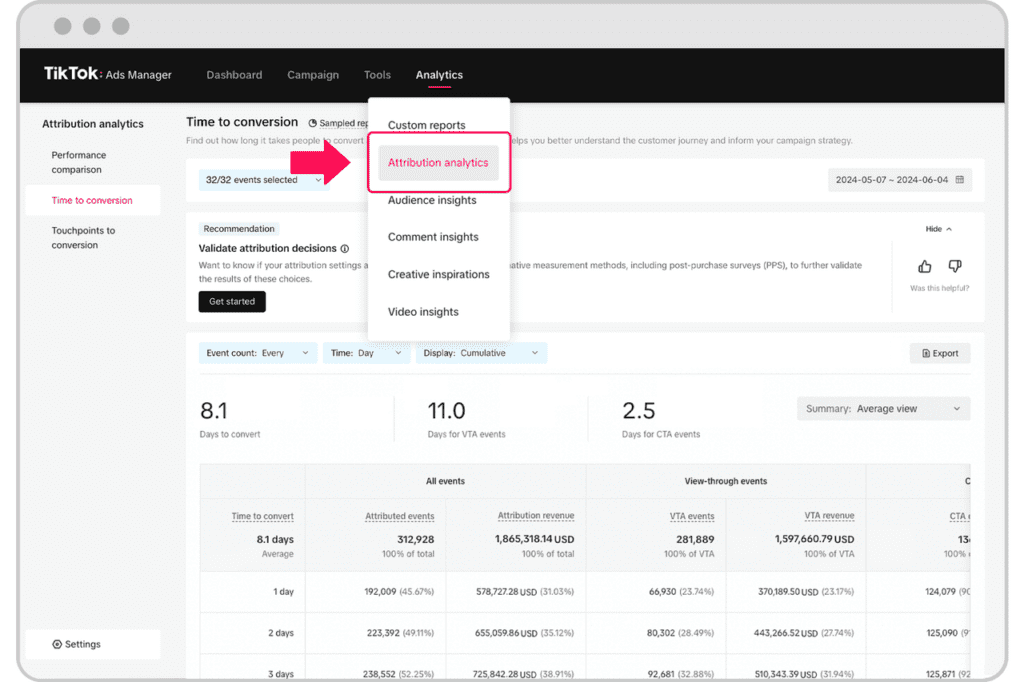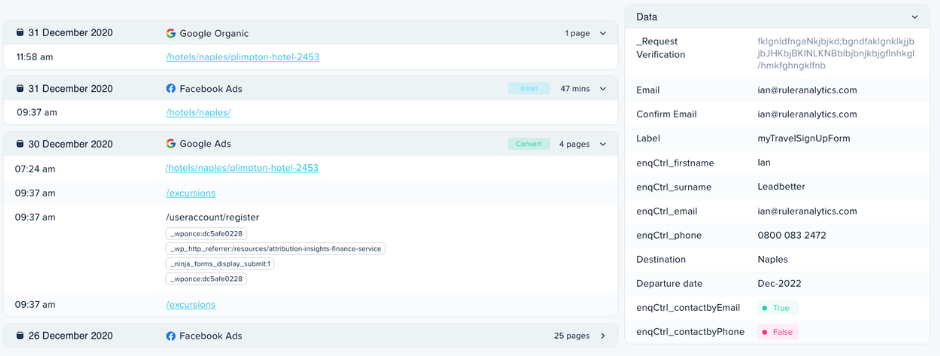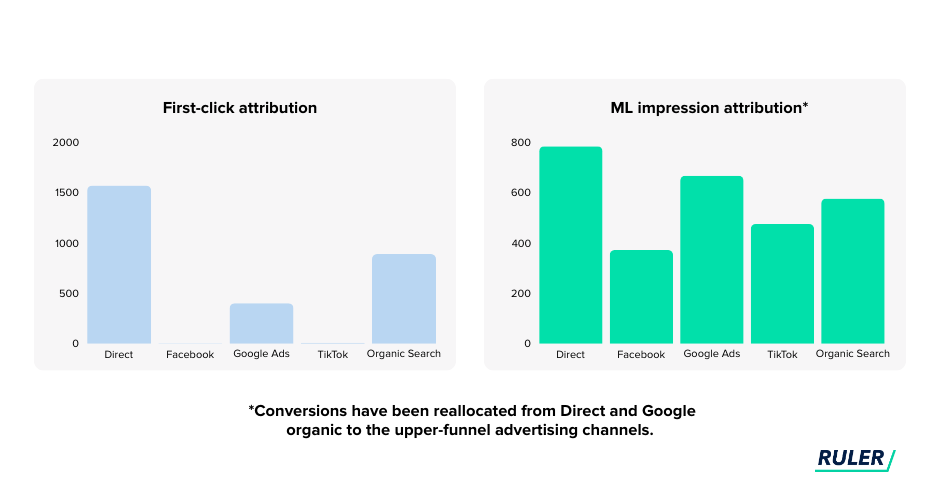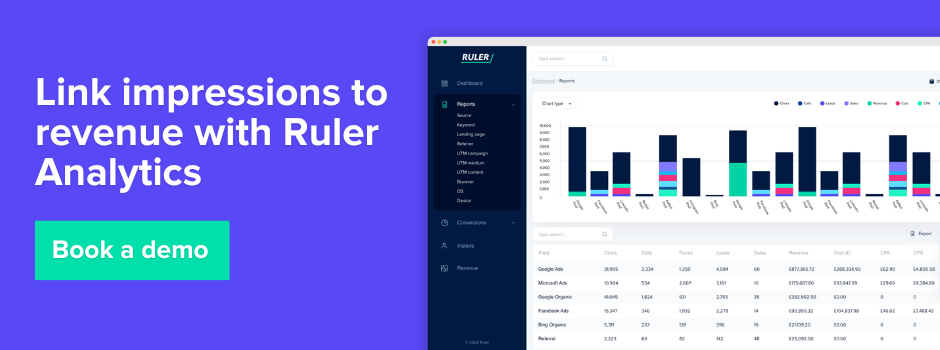We explore TikTok attribution, how it works, and the potential limitations in its accuracy.
These days, people come across all sorts of ads on different platforms, each with its own style, setup, and level of interaction.
For advertisers, figuring out how different ad placements and channels influence actions—like form fill or purchases—is still tricky.
In the past, marketers mostly relied on ‘last-click’ attribution, where only the final click before a purchase or install gets the credit.
But this approach misses a lot, especially on platforms like TikTok, where an ad view might just kick start a journey that continues across other channels.
Lately, TikTok has stepped up its attribution game, but how exactly does it help marketers prove their impact and make better choices to drive real value?
We break it all down in this guide.
Here’s what we’ll cover:
💡 Pro Tip
TikTok has become a major player in the advertising world, but it can be tough to prove its value because of its focus on impressions and the challenges of traditional tracking. Ruler’s attribution tool can help by tracking every touchpoint in a customer’s journey, giving you a single source of truth for your campaign data. Ruler’s MMM and impression modelling also uses smart stats and machine learning to measure how all your channels, including hard-to-measure channels like Meta and TikTok, are driving revenue.
Book a demo to see how it can prove TikTok’s value
Let’s cover the basics of attribution first. Attribution, in the world of social media (like TikTok), is all about linking users’ actions—like clicks or views on ads—to specific outcomes, such as app downloads, purchases, or page views.
For marketers, this is super important because it helps them see exactly how their ad spend translates into real results.
There are two main types of attribution:
Now, let’s dive into attribution windows, which are basically the time frames when actions are counted as conversions. These windows help marketers figure out which ads led to a conversion during that specific period.
These windows help advertisers tailor their campaigns to fit different user behaviours, making it easier to track and optimise ad performance
Tracking user actions has become a lot trickier than it used to be.
New browser regulations, privacy measures like GDPR, Apple’s ATT, and the phase-out of third-party cookies have all complicated traditional click-tracking and attribution.
On top of this, marketers are juggling more channels and campaigns than ever—everything from top-of-funnel awareness campaigns to bottom-of-funnel conversion pushes.
Today’s landscape demands measurement that goes beyond just clicks.
Since late 2023, TikTok has rolled out a range of measurement tools, including its Attribution Analytics and third-party solutions like multi-touch attribution and post-purchase surveys.

These are designed to help marketers get a better, more complete view of the customer journey on TikTok—from initial awareness to discovery to action.
Attribution Analytics is a first-party tool that gives advertisers insights into the TikTok customer journey, capturing how users move from discovery to action. With the rise of non-linear paths to purchase, this tool is a game-changer for brands wanting to understand each step of the process better.
Since its launch, TikTok has introduced some key features and updates, these include:
The first feature, included as part of this release, was Performance Comparison, a measurement tool that visualises conversions across different time windows to help advertisers find an attribution strategy that works for their business.
With Performance Comparison, you can:
TikTok’s new MMP network integration gives advertisers a full view of conversions driven by TikTok ads, moving beyond standard last-touch attribution. This doesn’t replace your existing MMP analysis but adds useful extras:
TikTok’s added a new attribution type—Engaged View-Through Attribution.
Since users can swipe up to skip ads, TikTok considers a video ad “engaged” if someone watches it for six seconds or more. This feature helps advertisers:
Together, SAN integration and EVTA give you a fuller picture of user conversions on TikTok, enhancing industry-standard attribution with extra insights from SAN.
TikTok’s recent changes to attribution are definitely a plus for advertisers—it makes it easier for brands to understand what’s working and what’s not. But there are still some challenges that come with it.
One big challenge is that TikTok’s attribution depends heavily on digital tracking, which, of course, requires user consent.
With privacy regulations like GDPR (General Data Protection Regulation) in Europe and CCPA (California Consumer Privacy Act) in the U.S., companies have strict limits on how they collect and use consumer data.
For example, GDPR requires companies to get explicit consent before collecting any data, meaning a lot of users might choose not to opt in.
This reduces the data pool that TikTok and advertisers can access, which can limit insights into user behaviour and ad performance.
While TikTok’s attribution relies on its own first-party data—data collected within the app—this can limit what marketers see about the customer journey.
Since TikTok can only track what happens within its platform, marketers might miss out on interactions that take place elsewhere.
So, if someone watches a video about your product on TikTok, then searches for it later on Google and finally converts after clicking a Google ad, TikTok’s analytics might take full credit for the initial view, while Google claims the win for the search and conversion.
This creates a situation where each platform tries to “claim” the conversion, resulting in mismatched and duplicated data.
Third-party tracking tools are built for this challenge by providing a more complete view by tracking user interactions across different platforms and channels.
With Ruler, for example, every touchpoint that leads to a conversion is tracked—even beyond the initial sale to recurring purchases.

Instead of relying on TikTok or Google’s attribution alone, Ruler offers first-party tracking that doesn’t depend on third-party cookies, allowing marketers to use different attribution models to get a better sense of the user journey.
Ruler also integrates marketing mix modelling and impression-based attribution, making it easy to measure the impact of top-of-funnel activities like brand awareness campaigns on TikTok that might not generate immediate clicks but still drive long-term revenue.

Instead of seeing just one part of the journey, you get the whole story, helping you understand how each touchpoint—from awareness to conversion—impacts your bottom line.
TikTok currently uses a 7-day window for tracking clicks, which works for some cases but falls short for B2B brands and larger purchases.
Think about the last time you made a big buying decision—it probably took longer than a week to finalise.
These narrow windows can create blind spots, often undervaluing the role of ads in generating demand and building brand awareness over time.
While TikTok does track conversions from ad views, the window is only 1 day. That’s not really enough time, especially since most purchasing decisions don’t happen overnight.
These short attribution windows cause marketers to miss out on key insights about the buyer journey, particularly when it comes to top-of-funnel activities.
With tools like Ruler, there’s no time limit—you can track user interactions for as long as you need.
This way, no significant interactions fall through the cracks, even if the conversion happens weeks or months after the initial ad view.
Ruler’s infinite attribution window gives you the full picture, ensuring every important interaction is counted.
Plus, Ruler can send this attribution data back to your ad platforms, which improves the accuracy of Smart Bidding automations and creates more precise retargeting lists.
This is especially helpful when data is limited, making it easier to identify high-value leads and nurture them effectively over the long term
TikTok is clearly making strides in improving its attribution capabilities, recognising the need to provide marketers with better insights into campaign performance.
But, there are still gaps, particularly when it comes to upper-funnel metrics like views and impressions.
By offering more control over data and enhanced visibility, Ruler enables advertisers to understand what’s truly driving results.
Want to see how it works in action? Book a demo today and discover how Ruler’s first-party tracking, MMM, and impression modelling can give you the complete picture of your campaign’s impact.
